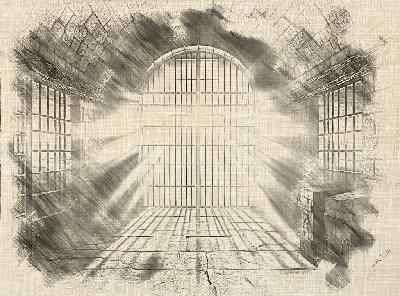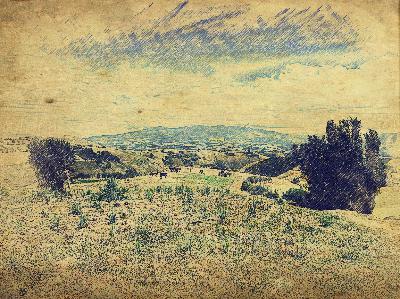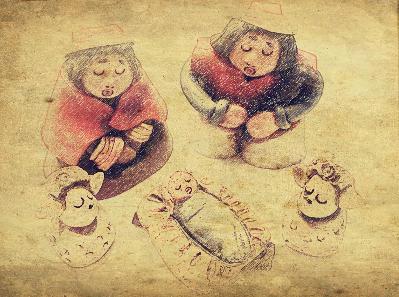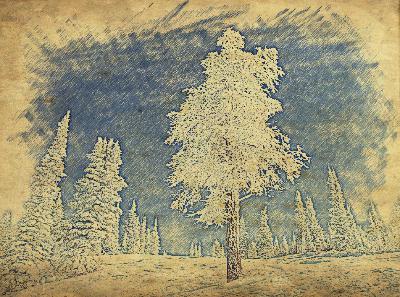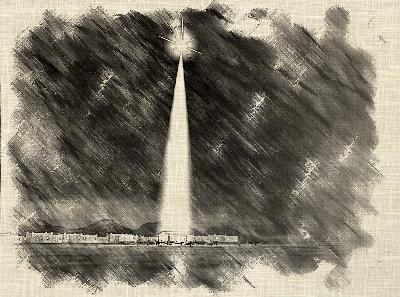Silent Night: Unveiling the Depths of Divine Peace
Description
The Whisper of Eternity: Holy Stillness
In the hushed moments of a winter’s eve, when the world seems to hold its breath in anticipation, we find ourselves drawn to the haunting melody of “Silent Night, Holy Night.” This beloved hymn, like a gentle snowfall, blankets our hearts with a sense of wonder and awe, inviting us to step into a realm where time stands still and the divine touches the mundane. As we embark on this spiritual odyssey, let us ponder the profound depths concealed within these simple verses, for in their simplicity lies a complexity that echoes the very nature of the Incarnation itself.
The Apostle Paul reminds us in 2 Corinthians 8:9, “For you know the grace of our Lord Jesus Christ, that though he was rich, yet for your sake he became poor, so that you through his poverty might become rich.” Is this not the essence of “Silent Night”? A cosmic king, clothed in the vulnerability of infant flesh, entering our world not with fanfare, but in hushed reverence. As we delve deeper into this hymn, let us prepare our hearts to be both comforted and challenged, for the true meaning of Christmas often lies in the tension between the familiar and the revolutionary.
The Paradox of Peace: “All is Calm, All is Bright”
In a world that often seems to teeter on the brink of chaos, the opening lines of “Silent Night” paint a picture of tranquility that seems almost too good to be true. “All is calm, all is bright,” the lyrics assure us. But pause, dear reader, and consider: Is this merely poetic license, or does it speak to a deeper, more profound reality?
The prophet Isaiah, centuries before that holy night in Bethlehem, proclaimed, “For to us a child is born, to us a son is given, and the government will be on his shoulders. And he will be called Wonderful Counselor, Mighty God, Everlasting Father, Prince of Peace” (Isaiah 9:6). The peace that “Silent Night” speaks of is not the absence of conflict, but the presence of something—or rather, Someone—far greater.
This calm, this brightness, stands in stark contrast to the turmoil of our daily lives. It challenges us to look beyond the surface, to seek the eye of the storm where true peace resides. In the midst of political upheaval, personal struggles, and global uncertainties, can we truly claim that all is calm and bright? Perhaps the hymn is not describing the world as it is, but as it is meant to be—and as it can be when we allow the Prince of Peace to reign in our hearts.
The Virgin’s Vigil: Mary’s Silent Strength
“‘Round yon virgin mother and child,” the hymn continues, drawing our gaze to the central figures of the Nativity. Here, in the stillness of that holy night, we encounter Mary—young, vulnerable, yet embodying a strength that defies comprehension. The Gospel of Luke recounts her initial response to the angel’s announcement: “How will this be, since I am a virgin?” (Luke 1:34 ). Yet, this same Mary later proclaims, “My soul glorifies the Lord, and my spirit rejoices in God my Savior” (Luke 1:46-47).
In Mary’s silent vigil over her newborn son, we see a reflection of our own spiritual journey. How often do we, like Mary, find ourselves cradling mystery in our arms, nurturing a faith that defies logical explanation? The virgin mother becomes for us an icon of contemplative trust, a reminder that true strength often manifests in quiet acceptance rather than boisterous assertion.
As we ponder Mary’s role in this cosmic drama, let us also examine our own hearts. Are we willing, like Mary, to say “yes” to the impossible? To nurture the divine within us, even when it means facing ridicule, hardship, or uncertainty? The silence of that holy night echoes through the ages, challenging us to find our own quiet strength in a world that often values noise over substance.
The Tender Might: “Holy Infant, So Tender and Mild”
The juxtaposition of divinity and humanity reaches its zenith in the phrase “Holy infant, so tender and mild.” Here, in these few words, we encounter the mystery of the Incarnation in all its paradoxical glory. The Almighty, clothed in the fragility of human flesh; the Eternal, bound by the constraints of time; the Creator, dependent on His creation.
The Apostle John, in his Gospel, captures this divine condescension with poetic precision: “The Word became flesh and made his dwelling among us” (John 1:14 ). But what does it mean for us, in our daily lives, to worship a God who willingly embraced such vulnerability?
Perhaps in this tender infant, we see a reflection of our own spiritual state—utterly dependent on divine grace, incapable of saving ourselves. The mighty hand that flung stars into space now curls around Mary’s finger, reminding us that true strength often manifests in apparent weakness. As Paul would later write, “But he said to me, ‘My grace is sufficient for you, for my power is made perfect in weakness'” (2 Corinthians 12:9).
In a world that often equates power with dominance and success with visible achievement, the image of the holy infant challenges our very understanding of strength and divinity. It invites us to embrace our own weakness, to find in our vulnerabilities the very spaces where divine grace can flourish.
The Lullaby of Heaven: “Sleep in Heavenly Peace”
As the first verse of “Silent Night” draws to a close, we are left with the soothing refrain, “Sleep in heavenly peace.” These words, more than a mere lullaby, open a window into the very nature of divine rest. In the midst of a world wracked by unrest, political tensions, and personal anxieties, the concept of “heavenly peace” may seem like a distant dream.
Yet, is this not the very peace that Christ himself promised? “Peace I leave with you; my peace I give you. I do not give to you as the world gives. Do not let your hearts be troubled and do not be afraid” (John 14:27 ). The sleep of the Christ child becomes a powerful metaphor for the rest that awaits all who put their trust in Him.
But let us not be lulled into complacency, dear reader. This heavenly peace is not a passive state of inaction, but rather a dynamic reality that should propel us towards active engagement with the world around us. As we contemplate the sleeping infant, let us ask ourselves: How can we become agents of this heavenly peace in a world that so desperately needs it? How can we, like Christ, embody a peace that transcends understanding and transforms lives?
The Trembling Witnesses: “Shepherds Quake at the Sight”
As we move into the second verse of our hymn, we encounter a striking image: “Shepherds quake at the sight.” These simple herdsmen, accustomed to the rugged realities of pastoral life, find themselves trembling in the presence of the divine. Their reaction serves as a powerful reminder of the appropriate response to encountering the living God.
The prophet Isaiah, upon seeing a vision of the Lord, cried out, “Woe to me! I am ruined! For I am a man of unclean lips, and I live among a people of unclean lips, and my eyes have seen the King, the Lord Almighty” (Isaiah 6:5). Similarly, when Peter realized the true identity of Jesus, he fell at his knees and said, “Go away from me, Lord; I am a sinful man!” (Luke 5:8).
In our modern world, where familiarity often breeds contempt and the sacred is frequently trivialized, the quaking shepherds stand as a rebuke to our casual approach to the divine. When was the last time we trembled in God’s presence? Have we, in our quest for a comfortable faith, lost sight of the awesome majesty of the Almighty?
Yet, let us not forget that these same shepherds, after their initial terror, became the first evangelists, “spreading the word concerning what had been told them about this child” (Luke 2:17 ). Their fear was transformed into joy, their trembling into testimony. Perhaps in their journey, we can find a roadmap for our own spiritual lives—moving from holy fear to holy boldness, all the while maintaining a sense of wonder at the miracle of the Incarnation.
The Celestial Chorus: “Glories Stream from Heaven Afar”
As our hymn progresses, we are transported from the earthy realm of quaking shepherds to the celestial heights where “Glories stream from heaven afar.” This vivid imagery echoes the angelic proclamation recorded in Luke’s Gospel: “Suddenly a great company of the heavenly host appeared with the angel, praising God and saying, ‘Glory to God in the highest heaven, and on earth peace to those on whom his favor rests'” (Luke 2:13-14).
But what are these “glories” that stream from heaven? Are they merely ethereal lights, or do they represent something far more profound? The Apostle Paul, in his letter to the Colossians, provides a clue: “For in Christ all the fullness of the Deity lives in bodily form” (Colossians 2:9). Could it be that these streaming glories are nothing less than the attributes of God Himself, now made visible and accessible through the person of Christ?
As we contemplate this celestial display, let us also consider our role as reflectors of divine glory. Paul reminds us, “And we all, who with unveiled faces contemplate the Lord’s glory, are being transformed into his image with ever-increasing glory, which comes from the Lord, who is the Spirit” (2 Corinthians 3:18 ). In what ways are we allowing God’s glory to stream through our lives, illuminating the darkness around us?
<h2 class="wp-block-heading has-




